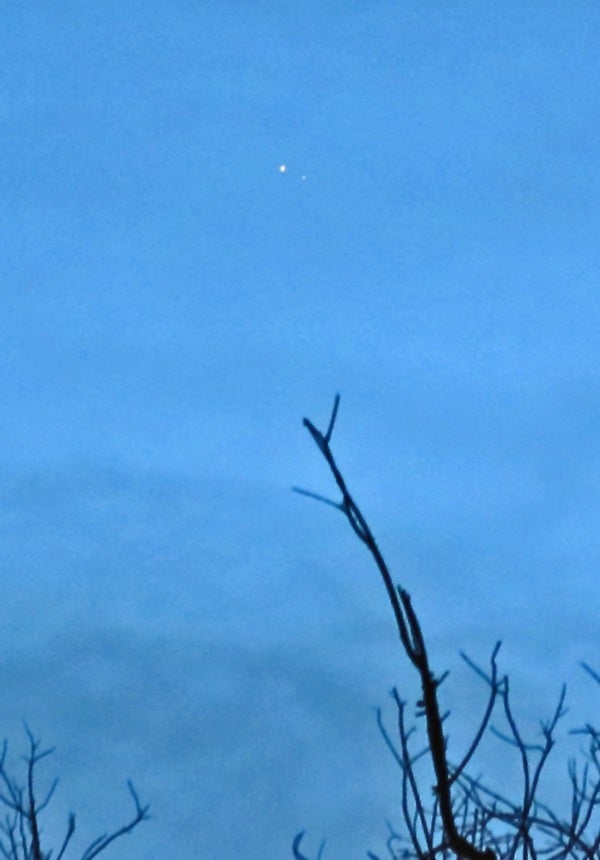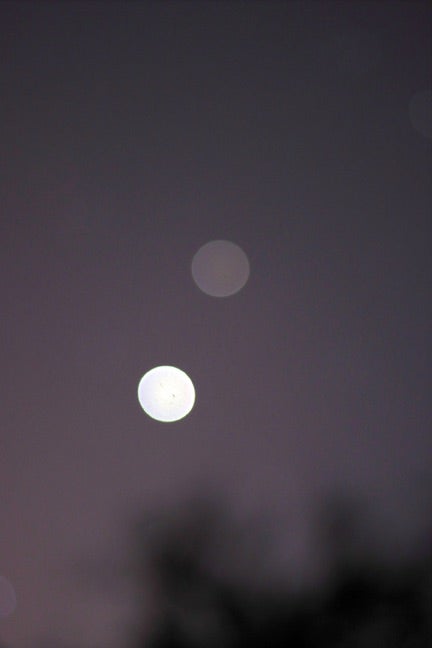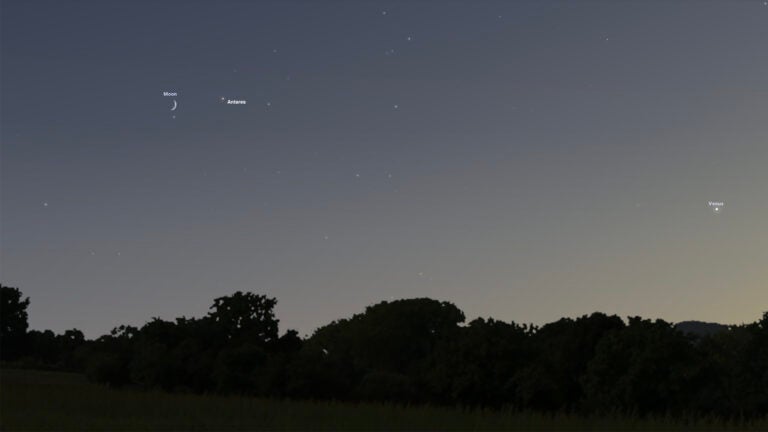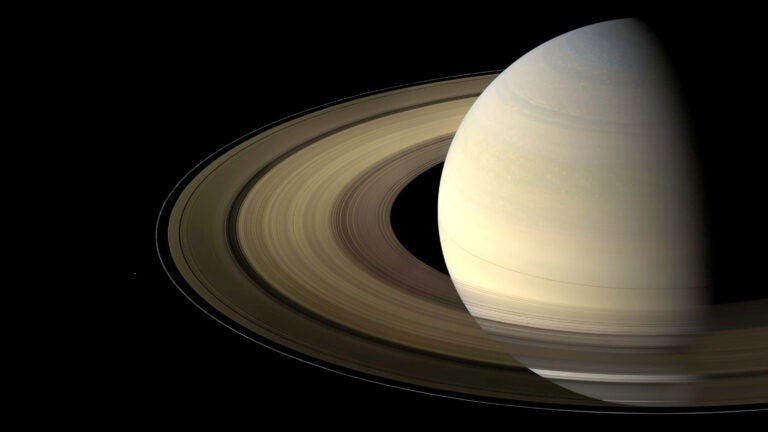It’s rare that we have a chance to see a naked-eye planetary phenomenon with little precedent in recorded human history. Yet, last year, those fortunate enough to have clear skies on Dec. 21 had a chance to witness something not seen in the night sky since 1226: a Great Conjunction between Jupiter and Saturn that brought the planets within 6′ of one another.
What people saw — or didn’t see — this time around might surprise you.
Incomparable beauty
The big question on many minds was whether the two planets would defy the resolving power of the naked eye and appear as a single (or elongated) star — especially when Jupiter, shining at magnitude –2.0, outshone Saturn (0.6) by about 12 times. No close pairing of comparable brightness exists among the naked-eye stars, though other planetary conjunctions have come close: In 2015, Venus and Jupiter approached within 18′ of one another. Glare from the planets made their separation appear smaller when seen against a dark sky, though not enough to visually merge into one.
Glare is a problem familiar to double-star observers. Mizar and Alcor — a 2nd-magnitude primary and a 4th-magnitude secondary seen 11.8′ apart — have long been considered a test for naked-eye visual acuity. In fact, studies have shown that they are almost exactly at the predicted threshold of distinguishability for those with 20/20 vision. The Jupiter and Saturn conjunction presented a much greater challenge: The glare from Jupiter is much stronger than Mizar’s, and the gap between Saturn and Jupiter was just half of the separation between Alcor and Mizar.
One “star” or two?
So, what did people see? From a small sample of observations that I collected from acquaintances — all made during closest approach — the results depended on both atmospheric and physiological factors.
Several casual observers from Maun, Botswana, reported that the two planets appeared as a single star. All of them saw the event during nightfall, when glare is most prominent. The planets had just emerged from beneath a cloud bank and were only about 5° degrees above the horizon, where atmospheric extinction is great. They were not disappointed, though, as they said the single star aspect was what they were “expecting to see.”
Edgar Castro of the Universidad Galileo in Guatemala City had a similar experience when observing about 15 minutes before the start of astronomical twilight. “All I wanted to see,” he said, “was if indeed the two bright spots would become one and, indeed, they did. At first glance it looked like a single point of light. I had never seen that before and it was wonderful.”
Also observing during nautical twilight, longtime amateur observer Leo Cavagnaro, in Mendoza, Argentina, had to climb his roof to view the planets, which were about 10° above the horizon. “Both planets, at least for me and my now older eyes, were easy to discern,” he reported. “I’m amazed at how close to each other they were when viewed with the unaided eye.” He also remarked on how “beautiful the color combination was,” with “yellowish Saturn” so close to “white Jupiter.”
Terry Atwood of Louisiana’s Shreveport-Bossier Astronomical Society also commented on color. “As soon as they were visible in the fading twilight,” he said, “they first looked like two colorless points of light, reminiscent of two distant high-altitude balloons reflecting sunlight. As the sky darkened, brilliant Jupiter took on a pale pink coloration while Saturn became a distinct yellow next to our neighbor’s spreading magnolia tree.” He adds that while he and his sister-in-law could discern both planets “as two separate points of light,” without optical aid, his wife Ruth could see only one.
Veteran planetary observer and “newly minted octogenarian” Klaus Brasch of Flagstaff, Arizona, said he had no difficulty splitting the pair. “Although I wear trifocal glasses and still have pretty good eyesight, I was pleasantly surprised to readily resolve both points of light without difficulty.”
As Atwood watched the sight, he wondered if we were viewing something akin to the Star of Bethlehem. “Because it took so many months for the two planets to meet in the evening twilight,” he said, “we wondered if anyone else would have noticed without the announcements from the TV weathermen.” Atwood notes that according to the Gospel of Matthew’s account, only the Wise Men — astronomers well-acquainted with the stars — noticed it. Who else would have taken note?
As always, share your thoughts and observations at sjomeara31@gmail.com.











